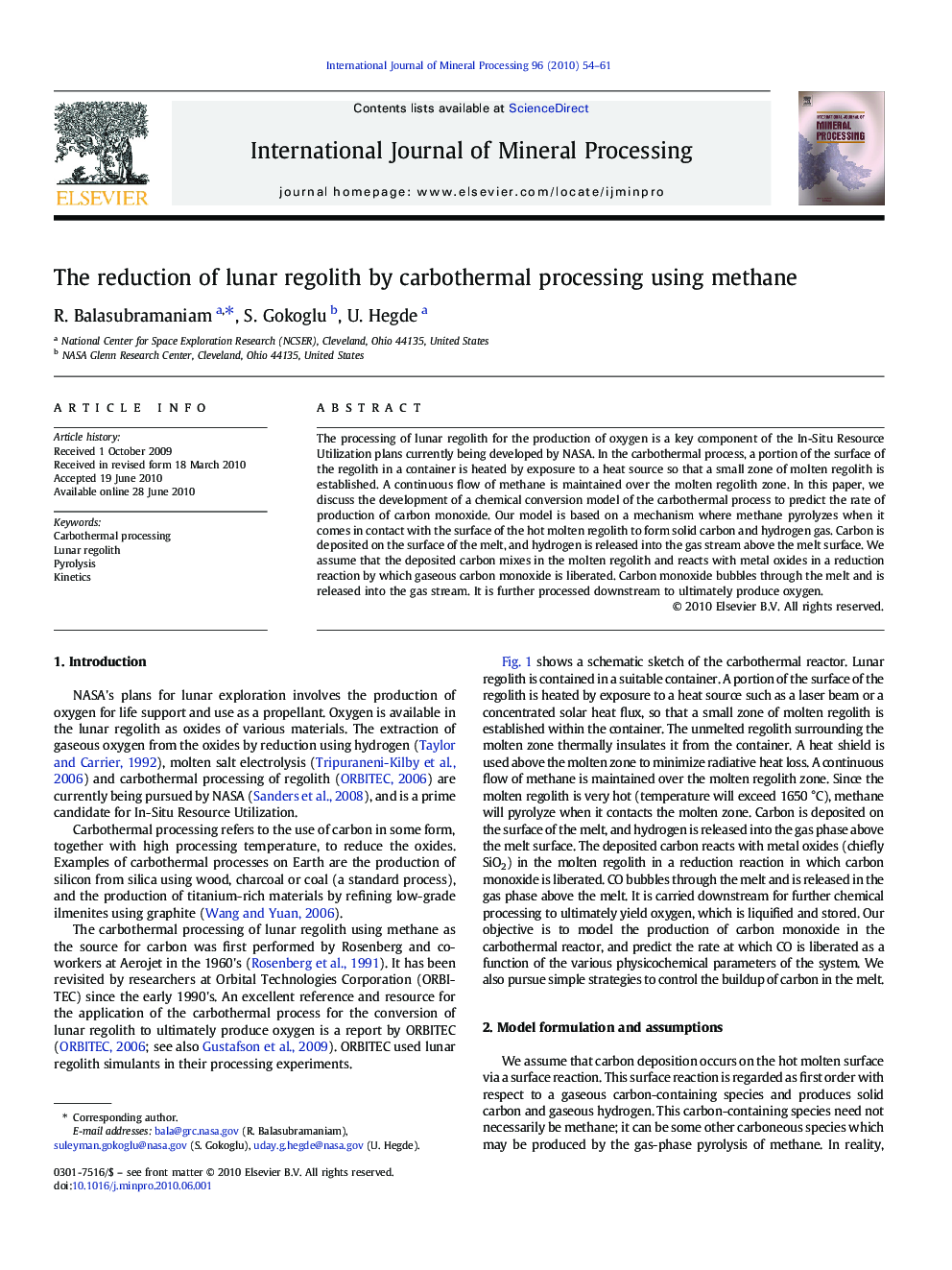| Article ID | Journal | Published Year | Pages | File Type |
|---|---|---|---|---|
| 214247 | International Journal of Mineral Processing | 2010 | 8 Pages |
The processing of lunar regolith for the production of oxygen is a key component of the In-Situ Resource Utilization plans currently being developed by NASA. In the carbothermal process, a portion of the surface of the regolith in a container is heated by exposure to a heat source so that a small zone of molten regolith is established. A continuous flow of methane is maintained over the molten regolith zone. In this paper, we discuss the development of a chemical conversion model of the carbothermal process to predict the rate of production of carbon monoxide. Our model is based on a mechanism where methane pyrolyzes when it comes in contact with the surface of the hot molten regolith to form solid carbon and hydrogen gas. Carbon is deposited on the surface of the melt, and hydrogen is released into the gas stream above the melt surface. We assume that the deposited carbon mixes in the molten regolith and reacts with metal oxides in a reduction reaction by which gaseous carbon monoxide is liberated. Carbon monoxide bubbles through the melt and is released into the gas stream. It is further processed downstream to ultimately produce oxygen.
